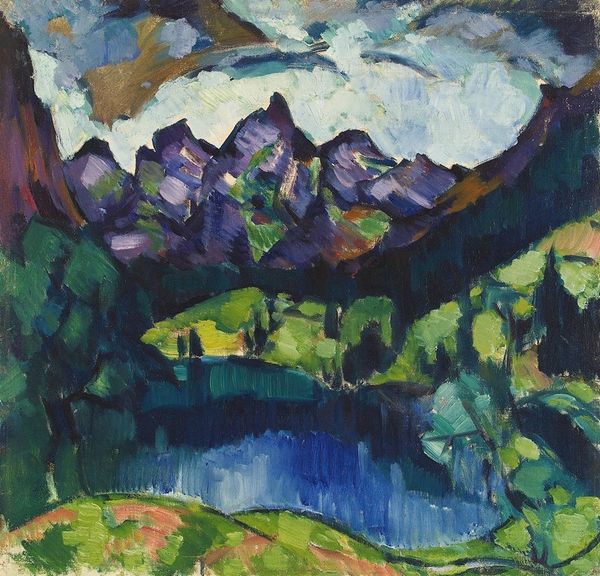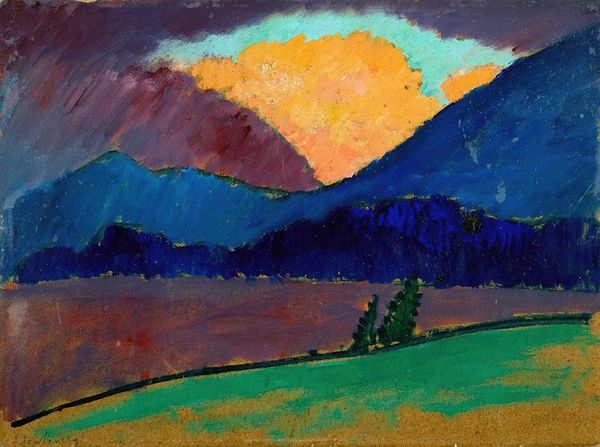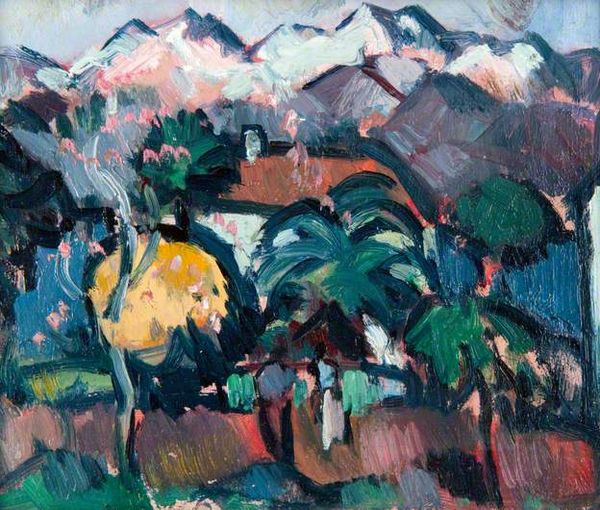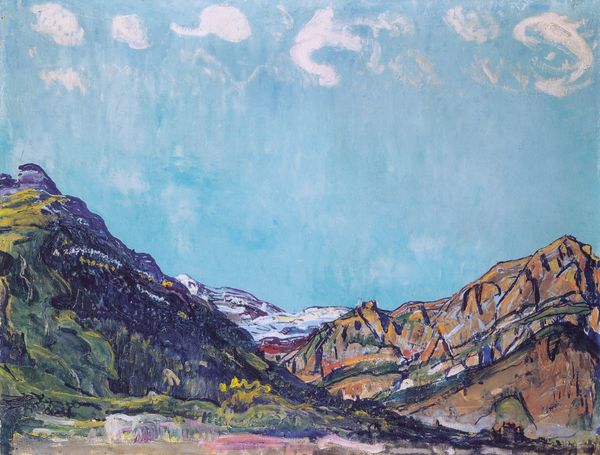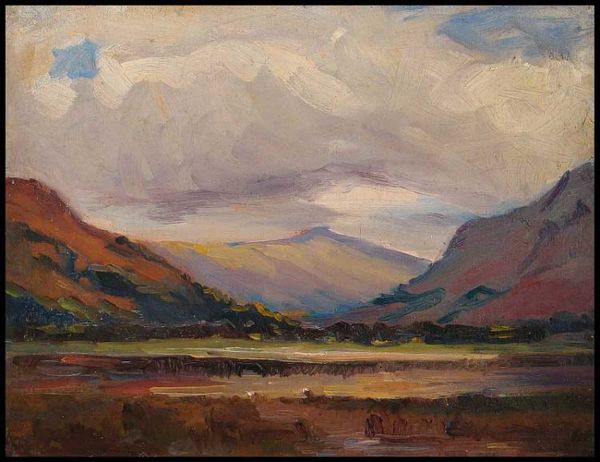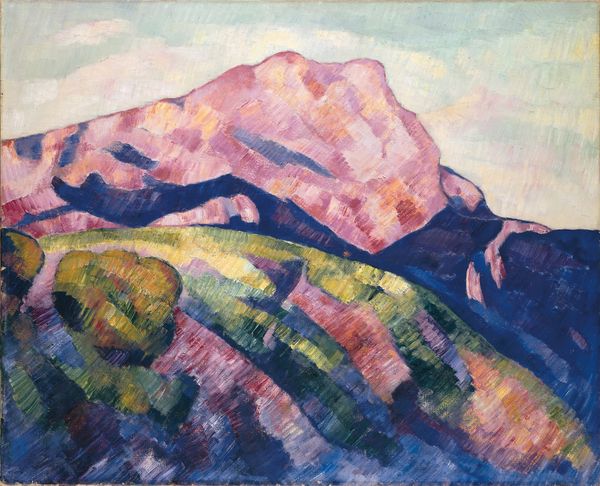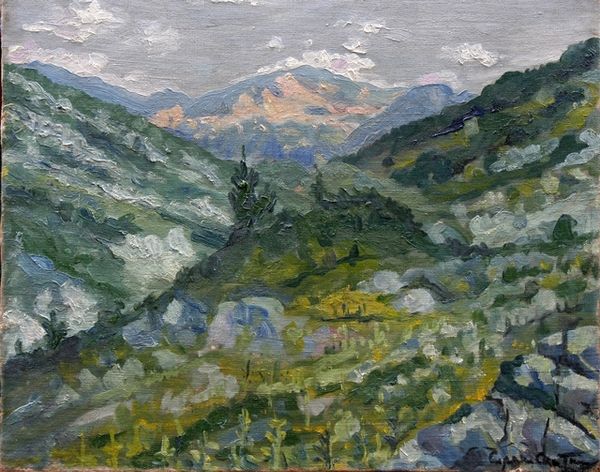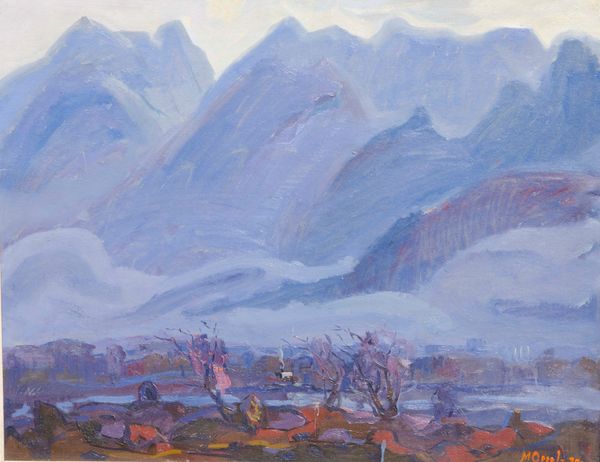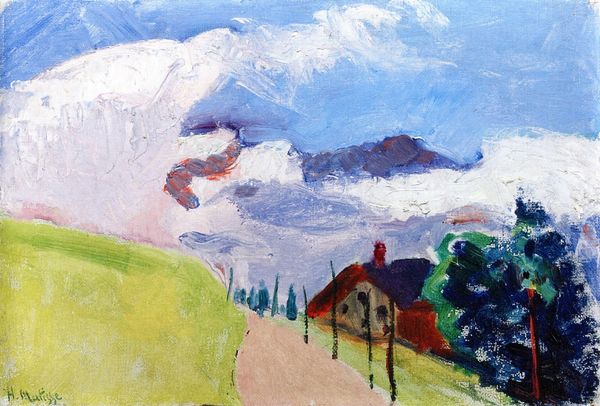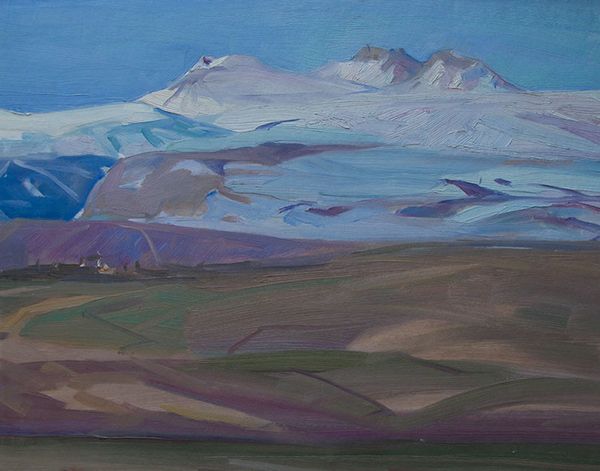
oil-paint
#
oil-paint
#
landscape
#
oil painting
#
expressionism
#
post-impressionism
#
expressionist
Dimensions: 36 x 48 cm
Copyright: Public domain US
Curator: Henri Matisse’s 1901 oil on canvas, "Green Needles on the Cross Javernaz," greets us with a cool palette. What’s your immediate take? Editor: It feels like a whisper of a landscape. Almost monochromatic in its blues and greens. A melancholic wash blankets everything. Curator: Interestingly, Matisse painted this quite early in his career, during a period where he was absorbing various Post-Impressionist influences. Note the layering of colors. How does that interplay strike you? Editor: There’s an evident tension between representation and abstraction. He's depicting a scene, but also dismantling it into blocks of color. It's not so much about the "thingness" of trees and mountains but the essence of their presence. He's playing with flatness against depth here, with almost child-like ease. Curator: Indeed, he simplifies the forms, pushing the boundaries of conventional landscape painting. This almost Fauvist application of pigment reveals the weight and texture inherent in the materiality of oil. It challenges viewers. How should we regard line, value, and color? Is there something romantic in his use of such earthy coloration to realize such un-earthy features in a bucolic vista? Editor: It’s less a love song to the countryside and more of a somber exploration of space and form, perhaps? It's not idealized beauty we see, but more of an introspection projected onto the scene. What is the emotional significance behind Matisse’s brushwork decisions? How has expression supplanted precision as the modus operandi here? It is a landscape charged with personal feeling. Curator: He definitely paves the way for later expressionistic forays, doesn't he? A bridge to what’s coming. What does a painting like this leave you thinking about? Editor: That sometimes the simplest of visions contain the greatest emotional depth, or simply, how evocative even seemingly somber art can ultimately be, if there's courage within it. Curator: Absolutely, it invites us to appreciate how feeling transforms a simple observation of place.
Comments
No comments
Be the first to comment and join the conversation on the ultimate creative platform.
